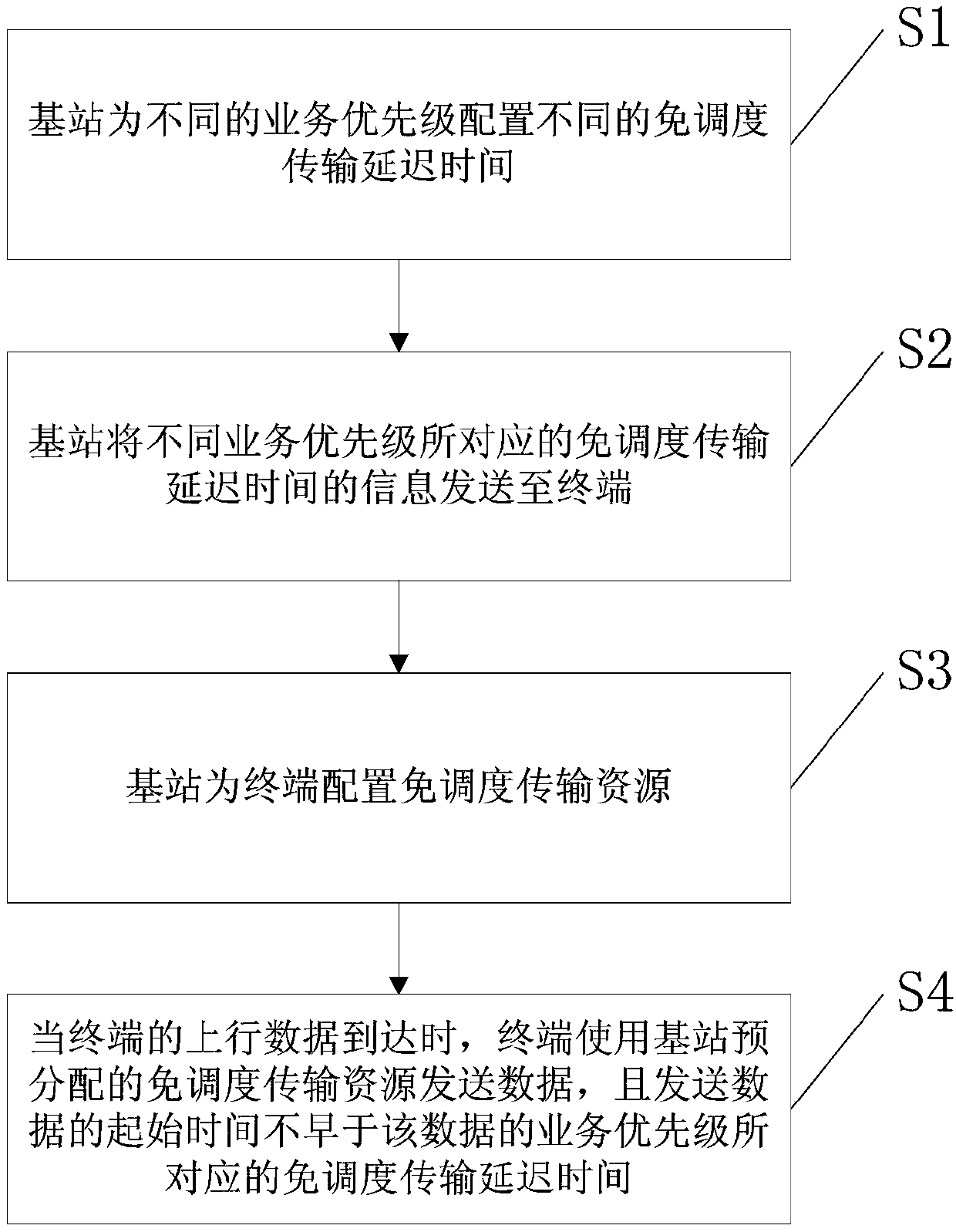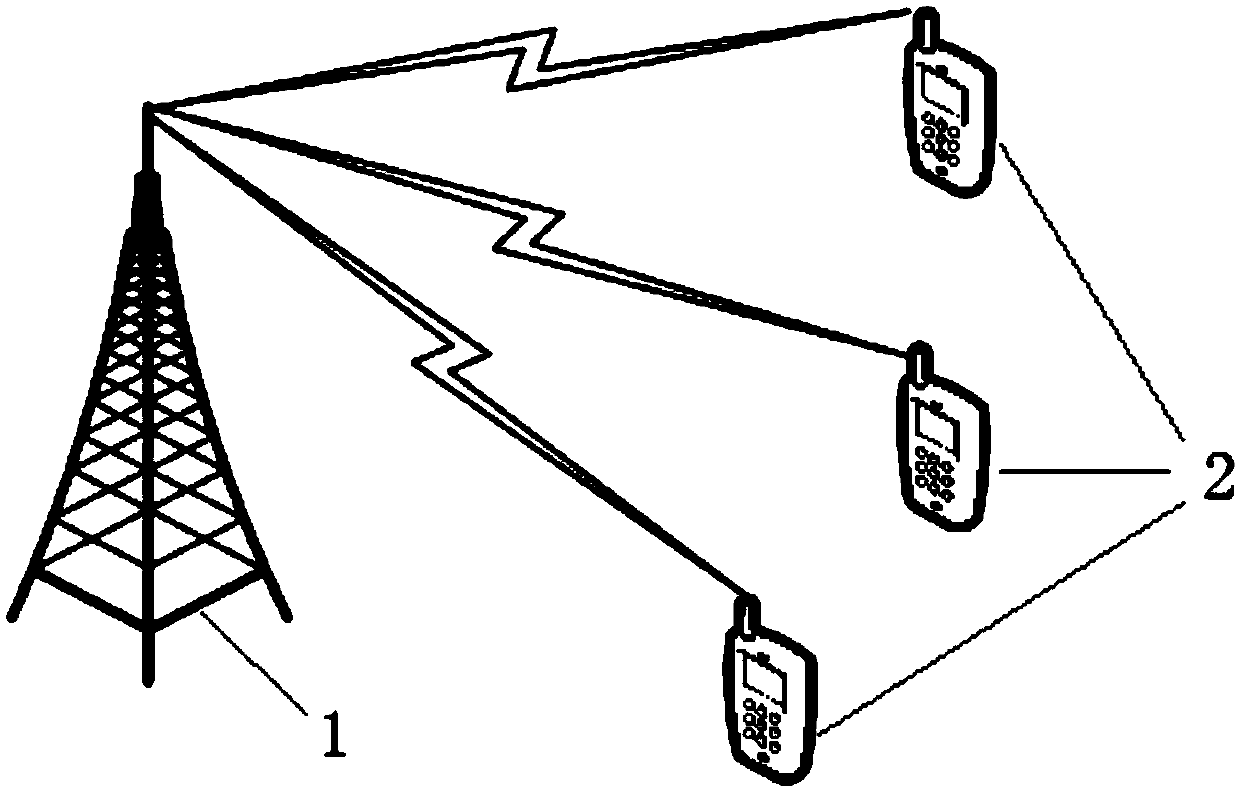Scheduling-free transmission method based on priorities
A scheduling transmission and priority technology, applied in electrical components, wireless communication and other directions, can solve the problem of increasing the delay of scheduling-free transmission, and achieve the effect of reducing the number of retransmissions, ensuring the quality of service, and avoiding interference.
- Summary
- Abstract
- Description
- Claims
- Application Information
AI Technical Summary
Problems solved by technology
Method used
Image
Examples
Embodiment Construction
[0026] Such as figure 1 As shown, the present invention, that is, a priority-based scheduling-free transmission method, includes the following steps:
[0027] Step S1, the base station configures different scheduling-free transmission delay times for different service priorities;
[0028] Specifically, firstly, the base station assigns different service priorities to different services according to the transmission delay requirements of the services, that is, services with higher delay requirements have higher priority, and services with lower delay requirements have lower priority. low priority;
[0029] Then, the base station records different service priorities from high to low as first priority, second priority, ..., Nth priority (N≥2);
[0030] Finally, the base station sequentially configures the scheduling-free transmission delay time for the first priority as t 0 , configure the scheduling-free transmission delay time for the second priority as t 1 , ..., configure...
PUM
 Login to View More
Login to View More Abstract
Description
Claims
Application Information
 Login to View More
Login to View More - R&D
- Intellectual Property
- Life Sciences
- Materials
- Tech Scout
- Unparalleled Data Quality
- Higher Quality Content
- 60% Fewer Hallucinations
Browse by: Latest US Patents, China's latest patents, Technical Efficacy Thesaurus, Application Domain, Technology Topic, Popular Technical Reports.
© 2025 PatSnap. All rights reserved.Legal|Privacy policy|Modern Slavery Act Transparency Statement|Sitemap|About US| Contact US: help@patsnap.com


